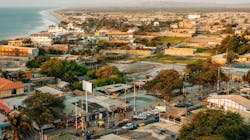Peru utility completes water loss reduction pilot
A pilot project to reduce drinking water losses in the network operated by EPS Grau, the water supplier in the Piura region of northern Peru, has been successfully conducted over the last few months.
The project was funded by the Inter-American Development Bank (IDB) in support of the modernization initiative by the Peruvian Ministry of Housing. As part of the initiative, EPS Grau needed to pilot a system that reduces non-revenue water.
Spanish-based multinational company Idrica was awarded a tender to provide consultancy services for the pilot. The project's timeframe was approximately one year.
"The main objective was to support EPS Grau’s staff in classifying, analyzing, and monitoring consumption, as well as characterizing water losses and detecting irregularities that prevent them from providing a good service," said one of the main project managers at Idrica, Francisco Javier Salguero.
The project’s plan ultimately aimed to monitor flow and pressure, and transfer knowledge to EPS Grau's sales, operation, and maintenance departments.
Software Solutions
Idrica helped to implement a number of its own solutions for the project.
The company employed its GoAigua FlowSens (Leaks) smart software, which monitors drinking water distribution networks for the early detection of leaks and fraud. This helped to detect major incidents such as unreported leaks and changes in the sectors' behavioral patterns during the monitoring and operation phase.
In addition, GoAigua Meter Insights (Smart Metering) was used for the integration, management, and advanced analysis of data from different types of meters. GoAigua Water Twin (Smart CADA) was deployed to obtain a global vision of the company's operating status through the integration of decentralized data and advanced algorithms for decision-making.
As a result of the project, more than 20 events were detected in the sectors, supply tanks, and micro-meters analyzed. This, together with EPS Grau's operations to solve the irregularities which had been discovered, was directly reflected in the amount of unbilled water, which decreased by 15 percent during the monitoring and operation phase.
Digital Transformation
Reducing non-revenue water (NRW) is one of the main challenges for water utilities. Deploying a digital, centralized, fully integrated system across the water cycle can enhance water efficiency.
"After implementing these solutions, some utilities have achieved savings of up to 20 percent in maintenance costs, 15 percent in energy costs, 70 percent in implementation costs, 35 percent in hydraulic performance improvements and a 60 percent drop in complaints due to billing errors," says Salguero.
